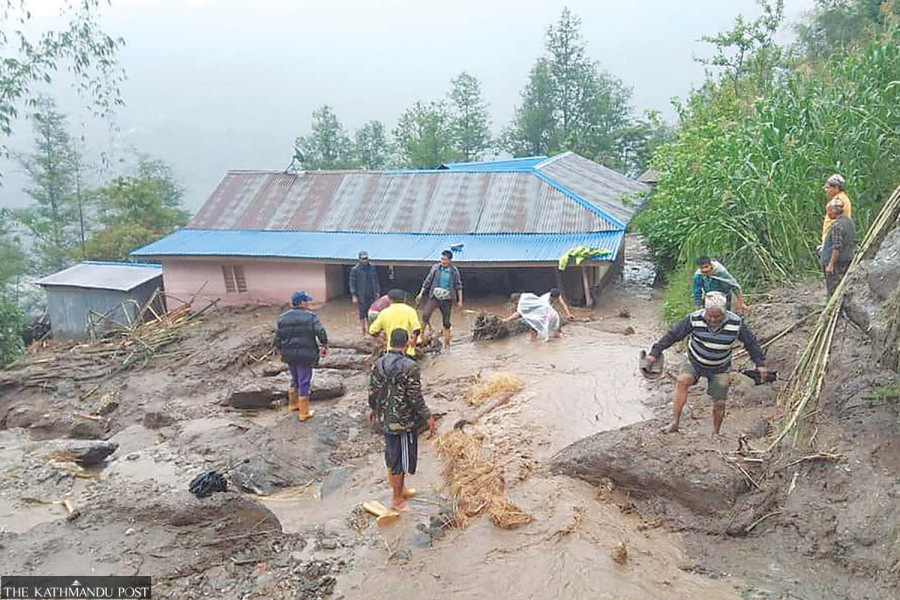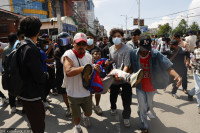Editorial
Old monsoon tale
Managing disaster begins locally. Federal and provincial governments must equip local bodies.
The monsoon in Nepal has just begun and incessant rainfall has already started ravaging the country. Recent floods and landslides in eastern districts—Taplejung, Panchthar, Sankhuwasabha and Terhathum—resulted in the loss of eight lives, with 27 people missing (as of this writing). Over the years, landslides and floods have become more common due to unpredictable weather that is the result of climate change and other anthropogenic activities. Nepal ranks as 20th most disaster-prone country in the world; and 30th on flood hazards. This is why it is all the more important for the government to be prepared to handle such an adversity.
As per a report in the Post about the recent disaster, the ward chief of Sidingwa-6 in Taplejung district expressed disappointment at the delay in supply of relief materials like tents, food, and blankets to displaced individuals. This isn’t a surprise, however. Government agencies are notorious for delays in relief and rescue. True, continuous rainfall messed up rescue efforts, as roads were blocked and bridges damaged. It is nonetheless painful to see the authorities work at a snail’s pace to offer the required assistance, leaving people in a lurch.
Following global best practices of community-based approaches in disaster management, Nepal aims to make local level resilient and increase the capacity of communities through the Local Governance Act of 1998. The responsibility to manage the disaster falls, first, on the local governments, as the constitution provides that “the local governments shall do as much as they can on their own, and where they cannot, provincial and federal governments shall provide backup or lead disaster risk reduction and management.” However, a 2020 report titled “Disaster Risk Reduction and Management in Nepal: Delineation of Roles and Responsibilities” argues that the Disaster Reduction and Risk Management Act, 2017 and other legal provisions don’t accurately capture the constitution’s spirit, creating confusion on the roles, responsibilities and accountability between local, provincial and federal levels.
Disaster management begins locally; hence federal and provincial governments must ensure they are well-equipped to handle the situation initially by providing adequate budget, human resources and storage of relief packages. The municipalities still rely on the provincial or federal agencies’ generic early warning systems. As a result, they can’t manage the disasters properly. This calls for municipal-level weather forecasts. What’s more, in many places, deforestation, settlements on the banks of rivers and haphazard road construction in hills that lead to devastation are still common. Immediate action is necessary to make people aware and mitigate risks.
The federal government must also take proactive measures to obtain accurate weather forecasts to prevent casualties. Conducting landslide susceptibility mapping in disaster-prone areas to identify risks and allowing local levels to handle situations in advance is as important. Disaster mitigation and prevention tools like Geographic Information Systems (GSI) and remote sensing should be promoted in all 8 percent of flood-prone and 59 percent of landslide-prone areas of the country. Only such proactiveness will prevent widespread loss of lives and livelihoods in the days ahead. Nepal has many laws, plans, and policies to address natural disasters, including floods and landslides. Unfortunately, often, the government fails in their effective implementation. The 2021 Melamchi flood and similar water-induced devastations are still etched in our memory. We can’t afford to lose more lives to the state’s inadequacies and carelessness.




 19.12°C Kathmandu
19.12°C Kathmandu














